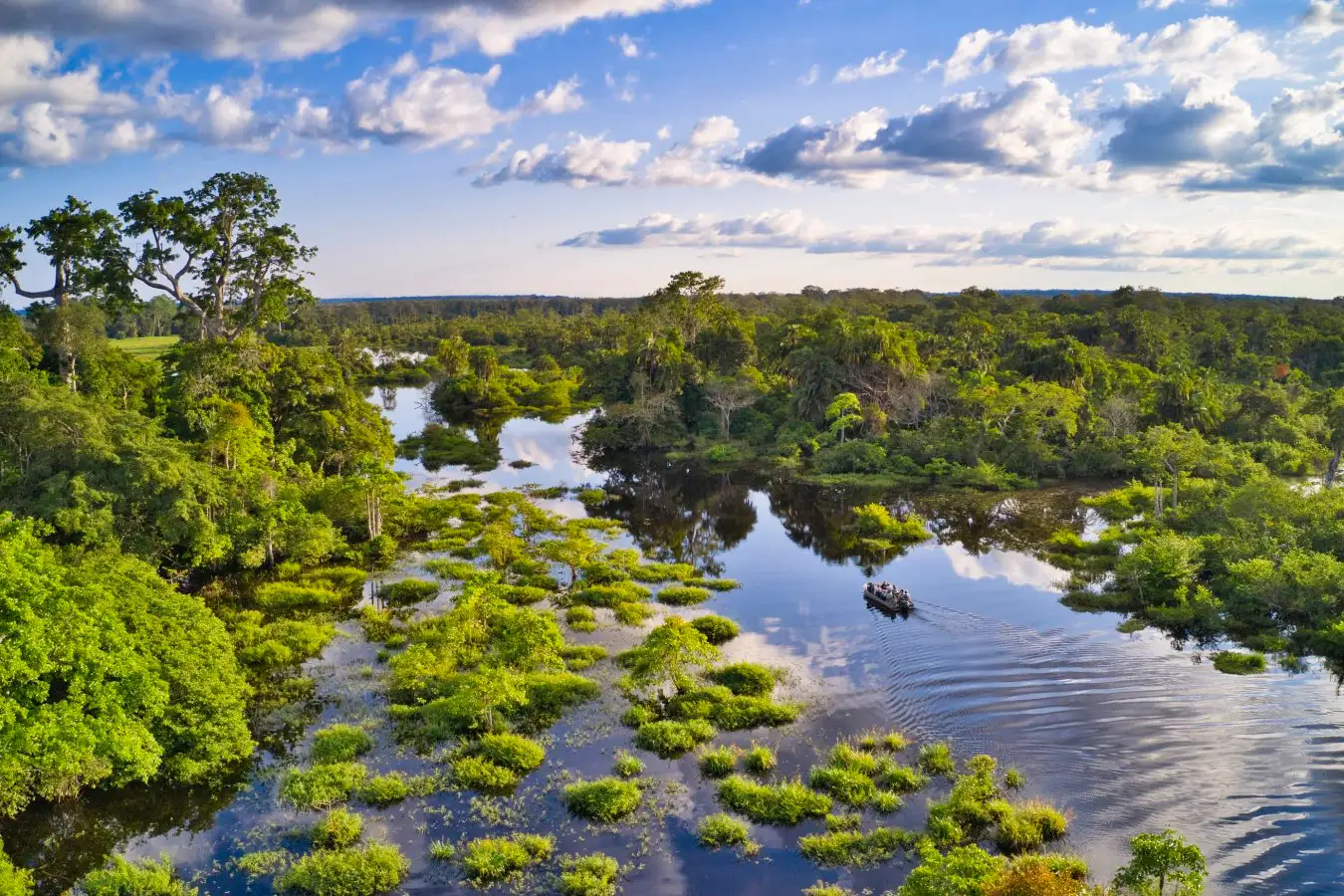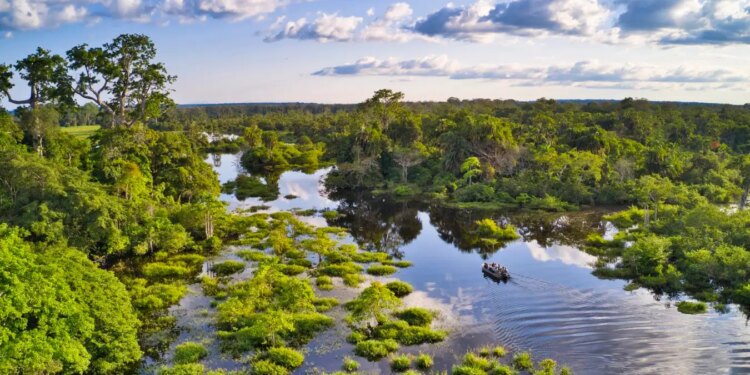
The Congo rainforest is the second largest in the world
guenterguni/Getty Images
African forests are now emitting more carbon dioxide than they absorb, a fundamental shift that will make it more difficult for the world to cut its net emissions to zero.
Forests and shrubby woodlands on the continent have previously been one of the world’s biggest carbon sinks, accounting for 20 per cent of all the CO2 taken up by plants. The lion’s share of this is in the Congo rainforest, the second largest in the world after the Amazon. Sometimes called the “lungs of Africa”, it absorbs an estimated 600 million tonnes of CO2 per year. However, that number has been falling as the rainforest is destroyed by logging and mining.
Now, researchers have found that after gaining biomass from 2007 to 2010, African forests lost 106 million tonnes of biomass per year from 2011 to 2017. That is equivalent to roughly 200 million tonnes of CO2 emissions per year. This was driven by deforestation in the Congo rainforest, says Heiko Balzter at the University of Leicester, UK.
“If we are losing the tropical forests as one of the means of mitigating climate change, then we basically have to reduce our emissions of greenhouse gasses from fossil fuel burning even faster to get to near-zero emissions,” he says.
Balzter and his colleagues estimated the amount of biomass with satellite measurements of the colour and moisture content of the forest canopy, as well as its height at certain points. They compared this with measurements taken on the ground, although these are sparse in Africa.
The study didn’t include, however, the wet peatlands found underneath much of the Congo rainforest, which absorb a small amount of CO2 each year and hold about 30 billion tonnes of ancient carbon.
The Amazon rainforest, which was also once a major carbon sink, emitted more CO2 than it absorbed in several recent years. But whereas deforestation in the Amazon has fallen under a government crackdown, it has been growing in the Congo.
In the Democratic Republic of the Congo, whose economy has been decimated by years of conflict, small-scale miners often destroy the rainforest to dig up minerals like gold and coltan, a mineral used in mobile phones and computers. Companies, many of them foreign-owned, illegally log colourful hardwoods like African teak and coralwood.
At the COP30 climate summit in the Amazon this month, Brazil announced the Tropical Forests Forever Facility, a fund that will pay its investment returns to tropical countries at a rate of $4 per hectare of forest left standing. But so far countries have donated only $6.6 billion to the fund, far short of the $25 billion goal.
Balzter says this mechanism could be more effective than carbon credits, which reward “avoided” emissions and have in many cases been found to be worthless.
“It’s really important to make this Tropical Forest Forever Facility work, and make it work quite quickly, to try and reverse this trend of the African tree biomass actually releasing carbon into the atmosphere,” he says.
Topics:
Source link : https://www.newscientist.com/article/2506287-africas-forests-are-now-emitting-more-co2-than-they-absorb/?utm_campaign=RSS%7CNSNS&utm_source=NSNS&utm_medium=RSS&utm_content=home
Author :
Publish date : 2025-11-28 10:00:00
Copyright for syndicated content belongs to the linked Source.







